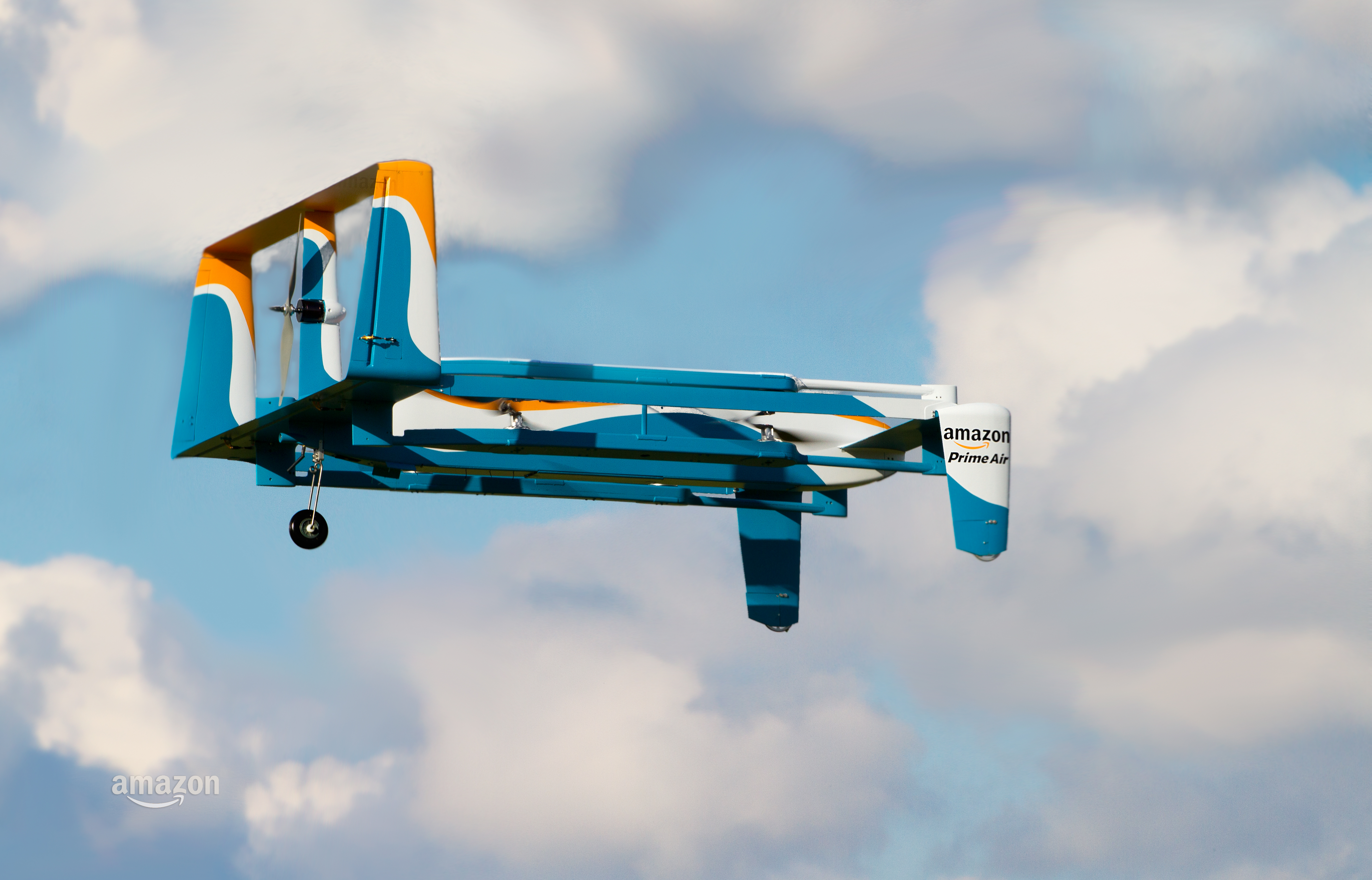
Amazon has just debuted its long-awaited delivery-drone, which if it is to be believed, could herald a science-fiction level of convenience in how we purchase our goods. The drone appeared in a video featuring Top Gear ’s Jeremy Clarkson, who eloquently explained how the company plans to transport good from their warehouses to your back yard.
According to Clarkson, the drone is a hybrid affair that blends the vertical take-off of a helicopter with the flight capabilities of an airplane. He explains that the prototype can rise to nearly 400 feet before transitioning into a horizontal flight mode. As Popular Scienc e points out, the 400 feet altitude is no coincidence, as it’s the legal elevation limit designated by the U.S. Federal Aviation Administration for all hobby aircraft and drones with no distinction between commercial and private drone use.

Clarkson boasts that the drone can deliver goods within 30 minutes of the order being placed at up to a distance of 15 miles (24 km), and uses a “sense and avoid” system to avoid collision with other aerial objects. Given this range, it’s uncertain whether the drone is piloted by someone within line-of-sight or flown autonomously. Current law dictate that the drone must remain within the pilot’s view, but this is expected to change within the near future.
Worth noting is that the rectangular blue-and-white drone depicted in the video is but a single prototype out of what will be a “family” of 12 delivery crafts, presumably suited for different aerial and weather conditions or cargo weight.
Amazon hasn’t announced the project’s official launch date, writing on the Prime Air site that it will not launch the service until it’s able to “demonstrate safe operations.” But that’s just a minor hurdle in comparison to the dozen or so other restrictions imposed by the FAA that make operating a commercial drone delivery service nearly impossible in its current format. For example, drone weight cannot 55 lbs, drastically limiting the type of cargo it can carry. As such, it’s not unreasonable to speculate that the service will be limited to no more than toiletries and other non-essential items, which ultimately raises the question of whether or not we even need this?
Cargo aside, the company has another important issues to contend with — cybersecurity. Coordinated efforts across multiple fronts must be set in motion to prevent any outsiders from commandeering the craft and potentially disrupting its navigation system, or worse, deliberately crashing the drone.
“Once these standards are agreed by technical experts, arguments to support the creation of commercial drone services beyond the line of sight will gain more support in the ongoing regulatory reform discussions and forums currently taking place,” explains Tech lawyer Luke Scanlon to the BBC.
The FAA estimates that there will only be 30,000 commercial drones operating in the United States by 2020, suggesting we’ve many more years to go before the economies of scale catch up to the ambition.
Via Popular Science and BBC
Advertisement
Learn more about Electronic Products Magazine





